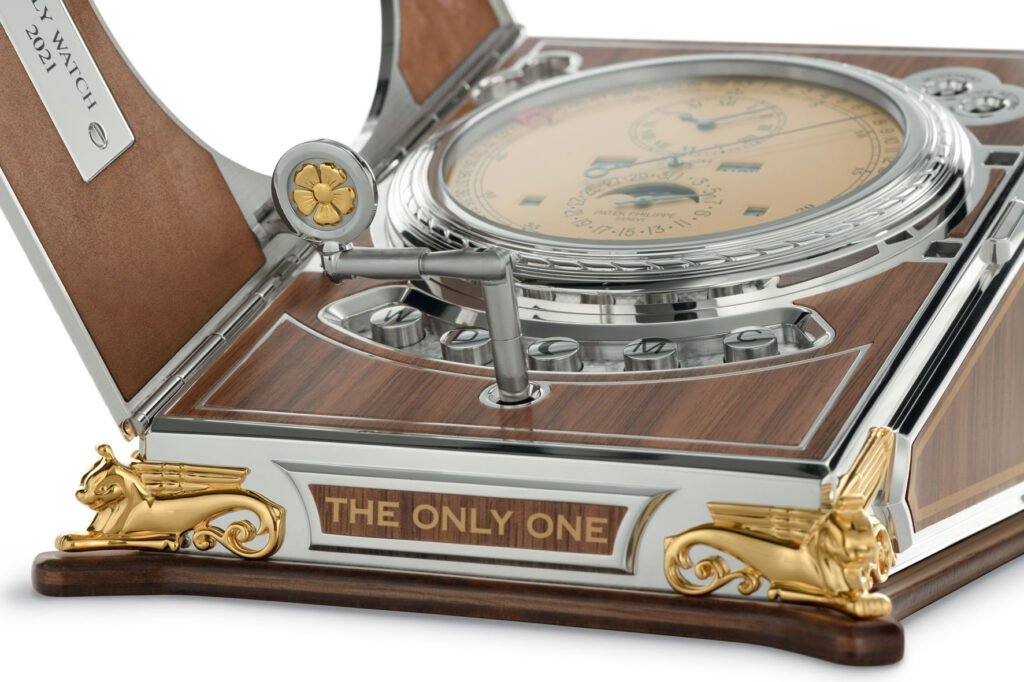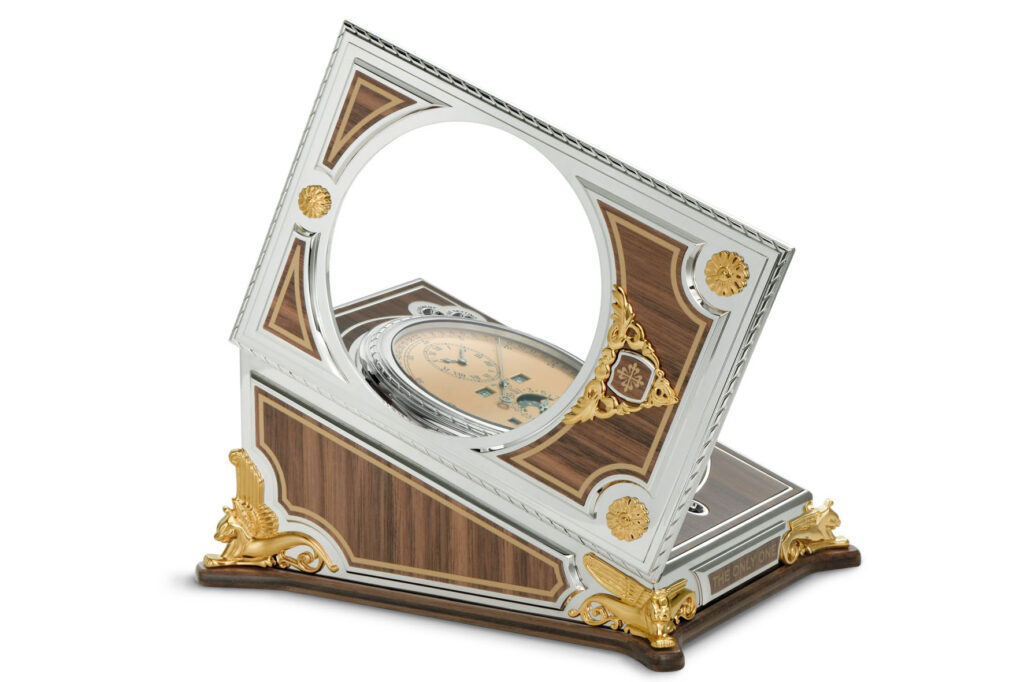Patek Philippe And The Dôme Clocks For Pisa Orologeria
25 October 2022Patek Philippe’s history of excellence also passes through table clocks. If the Geneva-based manufacture is at the top of the enthusiasts’ desires for its beautiful wristwatches, its classic Dôme clocks are equally sought after and precious. They owe their name to the dome shape (dôme, in French) that crowns the top.
A tradition coming from afar, born before the miniaturization of the movements, allowed the watches to pass from the pockets of the gentlemen to their wrists and those of the ladies. A tradition that follows, according to modern artistic and technical canons, the great French table clocks of the 1700s, and that combines wrist models in an almost unique assortment that Patek Philippe can boast compared to other top-of-the-range brands.
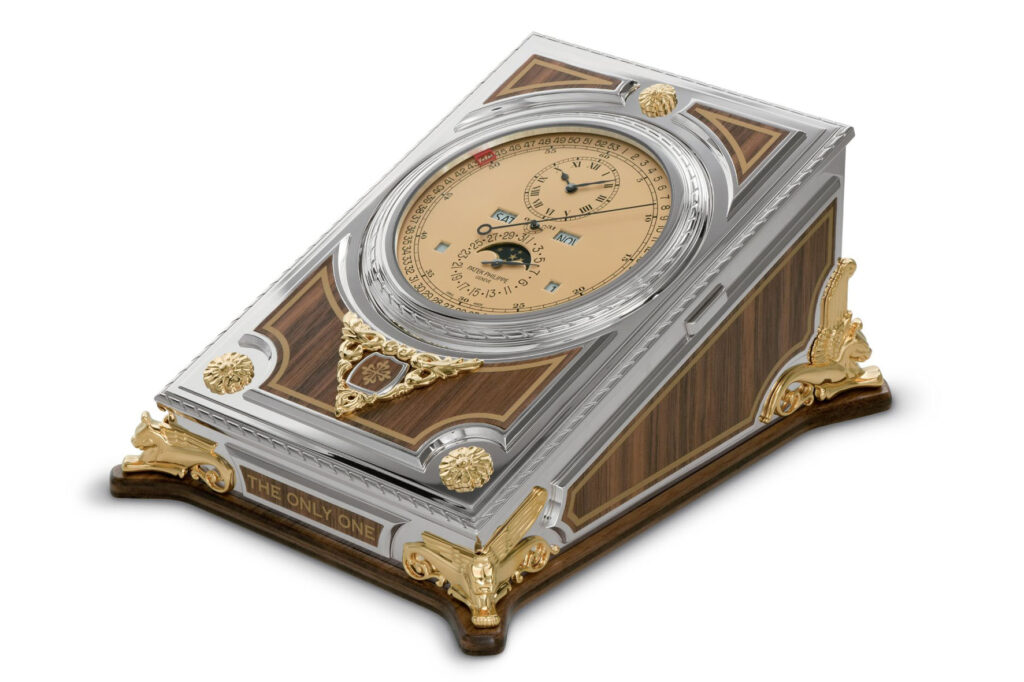
Because the table clocks of the Geneva-based maison come alive thanks to sensational pieces, which are not just Dôme clocks. Just think of the exceptional and unique piece created for the 2021 edition of Only Watch, the charity auction whose proceeds go to the Duchenne muscular dystrophy association of the Principality of Monaco, sold for 9.5 million Swiss francs on the 6th of November last year.
THE DÔME CLOCKS AND THE ART OF THE MÉTIERS RARES
Coming back to the Dôme table clocks, it is not too hard to say that for Patek Philippe these watches represent a stage to showcase both their technical and aesthetic expertise. Thanks to their size, they are the perfect showcase for the decorative techniques of the artisans of the maison’s métiers rares. With its rounded surfaces, this clock is like a perfect canvas for the virtuosity of enamel decoration, in particular for the cloisonné technique.
According to this technique, the colored powder enamels are put inside small fences made of wire or gold ribbon, which mark the contours of the design. Some decorations may require up to 20 meters of 22-karat gold ribbon to make the enclosures, within which color effects can be obtained by mixing the enamels.
As is normal when dealing with enamel work, the decorated surfaces are then vitrified through oven cooking, but not before having also applied an enameled surface inside the metal sides of the clock, in order to prevent distortion of the metal and the cracking of the decoration.
PATEK PHILIPPE’S HIGH CRAFTSMANSHIP
Along with newer themes, floral and animal motifs are classics of the maison; the Patek Philippe Museum’s collections, as well as an interest for exotic places, are often a source of inspiration. The company’s creative team knows that a decoration with a particular color, or a particularly lively one, will meet the favors of one culture, while in another, moderation will be better; in the same way, one scene can be born from the imagination of the craftsman while another faithfully reproduces an artistic masterpiece, but on a smaller scale.
In April of this year, the exhibition “High Handicraft 2022,” held at the Salons Patek Philippe in Geneva, was a unique opportunity to see all 24 Dôme clocks together, one-offs or limited editions decorated with a great variety of techniques from a small number of highly skilled craftsmen.

Among the exhibition pieces, there was the Dôme 20048M Las Vegas Casinos clock in Grand Feu cloisonné enamel, paillonné enamel and miniature painting, with a dial in wooden marquetterie. Or the 20114M Circus, also in cloisonné enamel embellished with silver leaf and illuminated painting, and the 20118M Bol d’Or in cloisonné and paillonné enamel, which pays homage to the seven victories achieved by the manufacturer’s honorary president, Philippe Stern, at the famous Bol d’Or regatta which takes place on Lake Geneva.
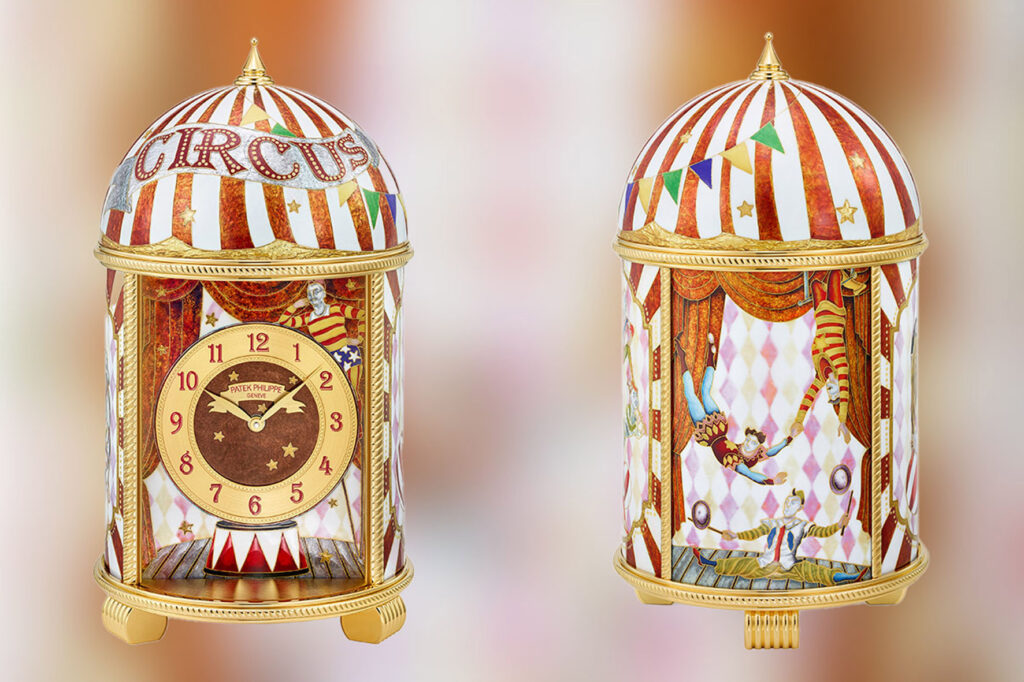
THE DÔME CLOCKS BY PATEK PHILIPPE FOR PISA OROLOGERIA
However, Patek Philippe has also reserved the Dôme clocks for special moments which offer the occasion to create unique pieces for the most refined collectors. And these moments have often seen the clocks come to life exclusively for some of the brand’s most prestigious partners. Like Pisa Orologeria in Milan.
For the opening of the Patek Philippe Space at Pisa Orologeria in 2008, the Geneva-based maison created two one-off Dôme clocks, the ref. 1551 and ref. 1552, traditionally decorated in cloisonné enamel. Two masterpieces of art and mechanics, whose decorations have a common source of inspiration among the most illustrious of Italian contemporary art: the painter Antonio Ligabue.
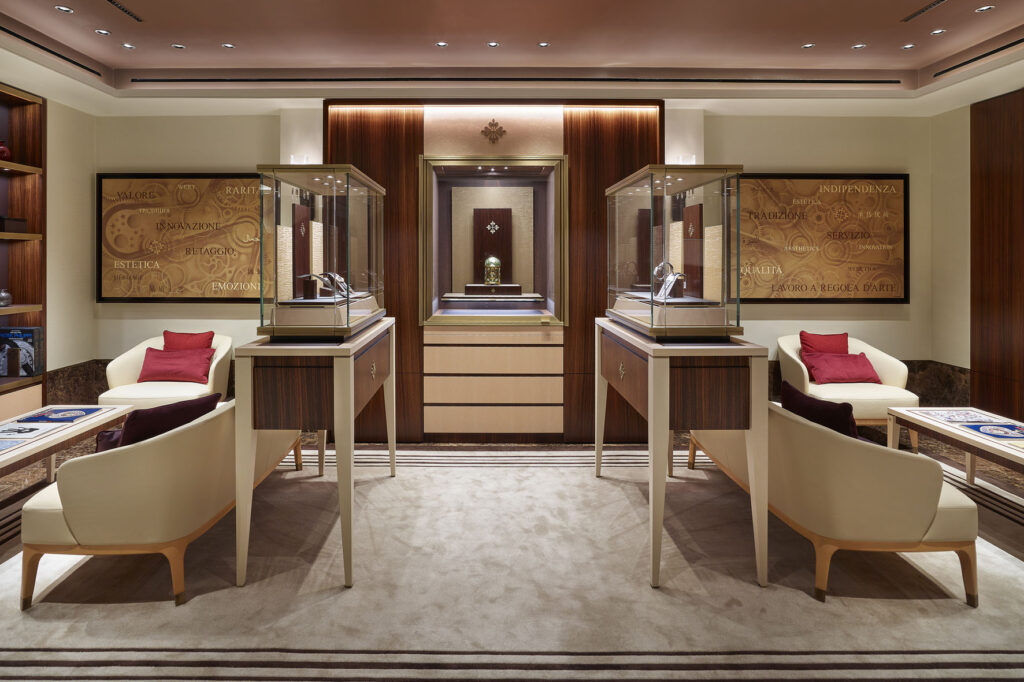
Ligabue, who lived between 1899 and 1965, spent the most important part of his life in Gualtieri, in the province of Reggio Emilia, Italy. The Pisa family comes from this small town and the great painter kept friendly relationships there. Despite moving to Milan before the Second World War, the Pisa family has never severed ties with their hometown, to which these clocks are a proud tribute.
The ref. 1551 is a unique piece whose dome depicts a leopard inspired by Ligabue’s painting “Leopard with antelope,” oil on plywood panel, dated 1939-1940. The curved side panels are inspired by the paintings of the same painter, “Leopard with sky at sunset,” oil on panel, undated, and “Lion assaulting two antelopes,” oil on hardboard, dated 1953-1954.

Even the ref. 1552 is a unique piece, whose decoration is inspired by a famous Ligabue painting. The dome and three of the curved walls reproduce a vase of flowers with butterflies, bees, and other bouquets and garlands of flowers, inspired by the “Vase with flowers,” oil on canvas by Antonio Ligabue, dated 1960-1961.
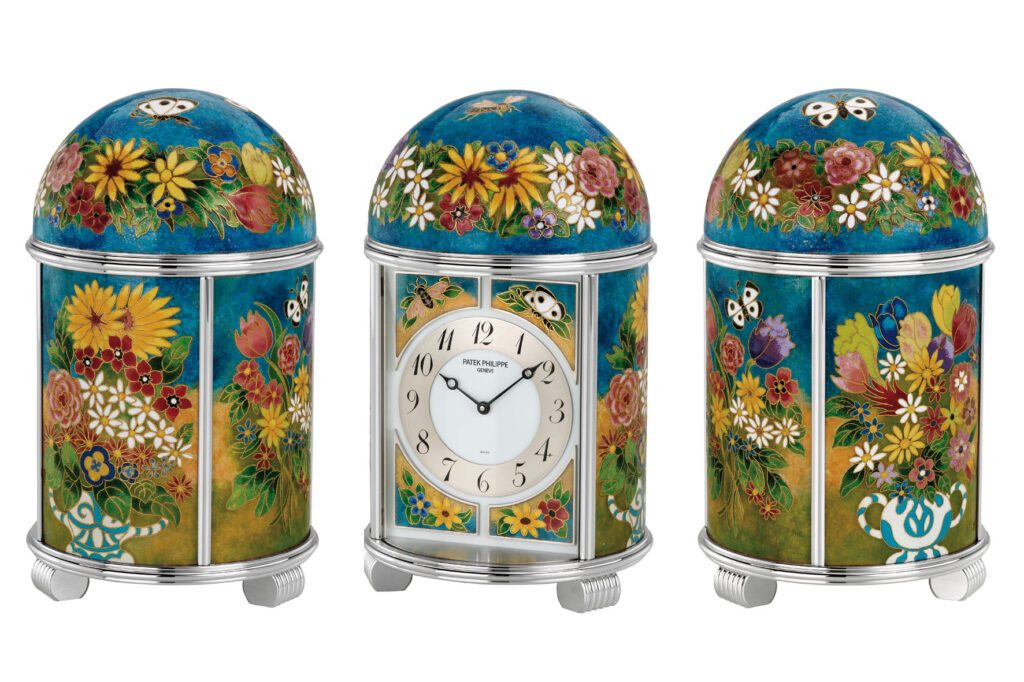
The mechanical heart of the clocks is made up of a manual winding movement, the 17”’ Pend caliber, rechargeable via an electric motor, with the hour and minute indications on the dial marked by the elegant Breguet-shaped hands.
GUARDIAN OF TRADITION
Both clocks are examples of the traditional decorative arts of the Patek Philippe artisans, put into practice in the construction of the cases and their enameling, engraving and setting. A quality that has distinguished the best watches in Geneva for over 400 years, whose tradition is kept alive by a small team of specialists from the manufacture. They carry out these crafts which, in addition to being technically difficult, do not allow any mistakes.
Since 1839, the year of its foundation, Patek Philippe has relied on highly talented craftsmen to decorate their watches and clocks. This can be discovered by leafing through the pages of the first register, kept in the archives of the Patek Philippe Museum, and by reading the meticulous annotations of every single procedure carried out for each watch. The Dôme clocks continue and pass on this ancient knowledge, even in the unique pieces created for special partners, such as Pisa Orologeria.
By Davide Passoni

